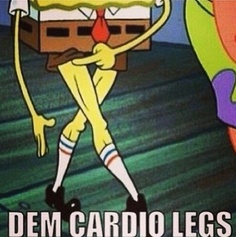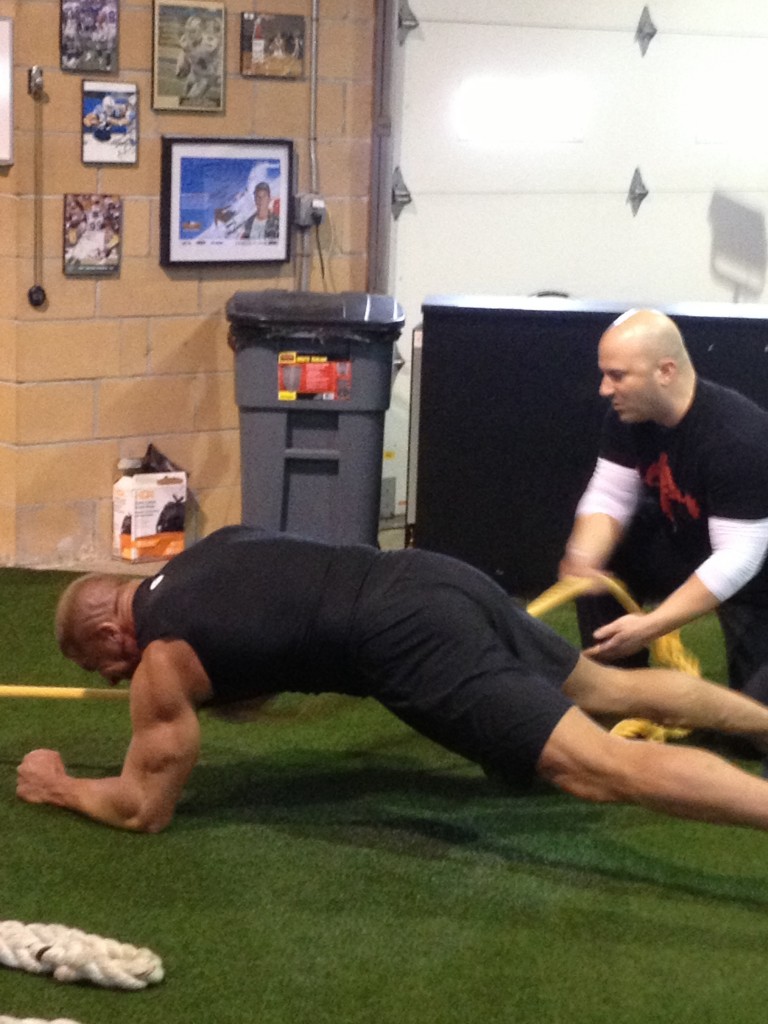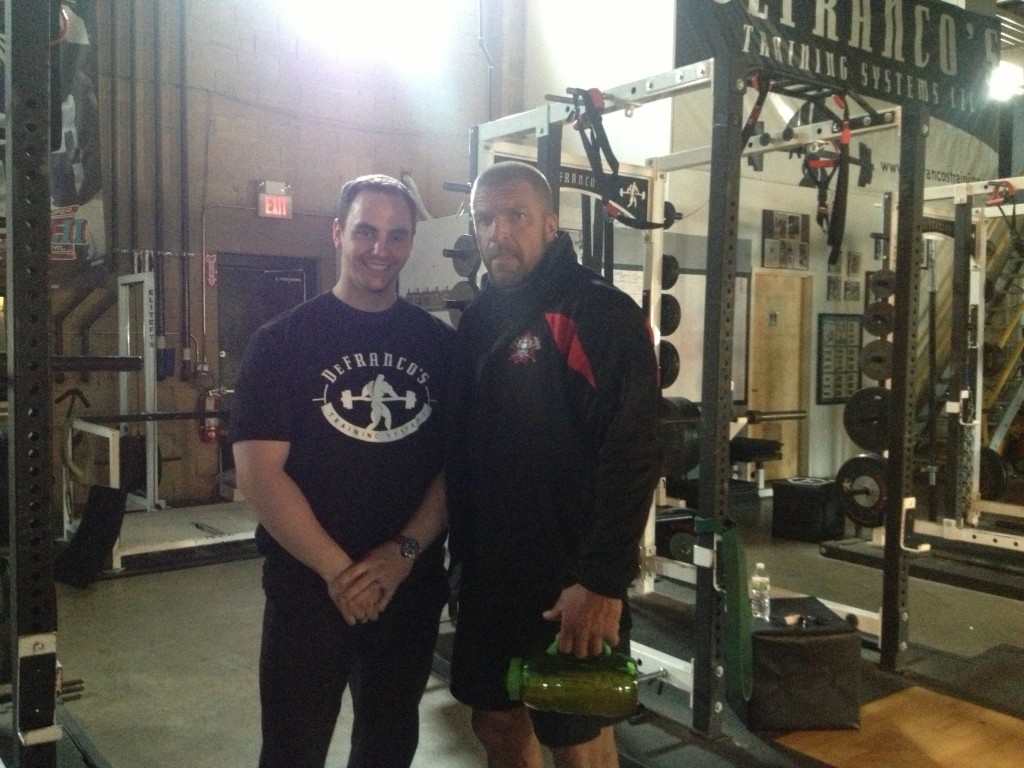I Did a Run Yesterday and Lost All My Gains
Yesterday I did something somewhat out of character. It was an odd event that was a long time coming.
I ran. On a treadmill. For about 30 minutes.
I know, cardio is the bane of the strength coaches existence, and any opportunity to do anything but lift heavy stuff will result in an instant shrivelling of any gained muscle spike your cortisol, make you stiff, ruin your knees, drop your testosterone, make you skinny-fat, turn you into Tracy Anderson, shrink your balls, and pretty much any other bad idea all simultaneously at once.
I’ll admit my main reasons for doing a run were to help combat the fluffiness of the winter months, but secondary was to spend some time working on cardiac health. You know, the thing that cardio is actually named for?
The heart is a muscle that responds to training, much in the same way as any other muscle. And just like any muscle, it responds best to a variety of training intensities, durations and modalities. Strength training and heavy loading tends to provide a completely different stimulus to the heart than lower intensity, steady state work.
In many cases of cardiac dysfunction, lower intensity steady state work is the primary means of exercise, progressing to moderate and eventually higher intensity intervals. Strength training is used as well, but the risk associated with heavy resistance training and cardiac injury means it’s not recommended. It would be no different than having someone with a chronic knee injury doing max weight ass to grass deep squat.
Reading in Arnold Schwarzeneggers’ autobiography after he had heart surgery and how lifting heavy (as he was used to for decades) was no longer an option can show how even those who could be considered extremely skilled with heavier loads could be susceptible to the same issues.
Working on cardio training helps not only burn calories, but plays a host of benefits through the entire body. It increases oxygen delivery to working tissues, speeds removal of waste products, improves recovery time between bouts of strenuous exercise, aids in autonomic recovery (especially when it functions as a stress reliever), and improves dilation of blood vessels as well as their elasticity.
One major benefit of low intensity steady state cardio, especially with recovering injuries, is the increased blood flow and waste removal, as well as lymphatic flow through injured tissues, which helps to increase healing rates. The key with these types of workouts though, is LOW intensity, typically less than 120 beats per minute for heart rate. The downside is most people tend to get competitive and try to get higher heart rates than needed, thinking more is better, but this can increase stress to susceptible tissues and cause some added trauma to the area.
While I’m sure some people could say that you can get all the cardio benefits you like from lifting heavy weights faster or for more reps, there’s some significant differences between the cardiac development of a strength athlete and everyone else. Haykowsky et al (2000) showed in this paper that the left ventricle, the main chamber of the heart that pumps oxygen-rich blood through the system, wasn’t any different when comparing young or masters level powerlifters with age-matched sedentary controls. This is both good and bad, because while resistance training by itself doesn’t provide any detrimental effects to the structure of the heart, it also doesn’t provide any beneficial effects on the structure of the heart.
duManoir et al (2007) compared the effects of resistance training alone against a program of rowing and resistance training in this paper, and showed that the combined approach resulted in a greater change in ventricular cavity size during diastole (relaxation), greater end systolic (during the beat) surface area, and left ventricular mass following a simulated 2000m rowing test. The simple addition of row training over 10 weeks showed a greater beneficial impact to heart structure and function than a dedicated long-term power training program.
For this reason alone, I feel cardio work should be included in all programs. You can see rather immediate change in oxygen delivery, which improves recovery to allow you to train harder at a later point, but it also increases mitochondrial energy production, which makes you have more energy for exercise as well as daily life.
To the discussion of cardio causing you to spike cortisol and lose testosterone, it doesn’t seem to happen in long term interventions, even when looking at elite endurance athletes. Hejazi et al (2012) looked at serum concentrations of testosterone, cortisol, and immunoglobin levels in elite cross country runners working out 12 times a week, and found cortisol levels decreased significantly and testosterone/cortisol ratio increased following the preparatory phase where they were introduced to the work volume. Cortisol did increase before the competitive phase, which could be psychological as much as physical when relating to competition anxiety.
Santorio et al (2013) even found that putting severely obese patients (BMI greater than 40) on a respiratory muscle endurance training program where they breath into a spirometer resulted in an increase in growth hormone and a reduction in cortisol.
Bro, do you even breathe?
So let’s say you’re bro-ing it out hard int he gym and lifting weights 4 or 6 days a week, getting your swole on like no bodies business, and want to know how to do the cardio so that you don’t lose any of your precious gains. Didn’t you hear that looking at a treadmill automatically decreases your deadlift by 7.4%??
Seriously, doing 1 or 2 cardio workouts a week is going to have minimal to no negative effect on your strength, mobility, size, or speed, and will help to increase many of the parameters of health discussed earlier. You might even notice you see benefits with your workouts, as well as wind up with less stiffness and more energy, shorter rest breaks, and more endurance for when it’s time to let others see you naked.
You could even do cardio on a daily basis and still be a jacked beast. I remember meeting Triple H, legendary pro wrestling world heavyweight champion, last year at DeFrancos Gym when attending the CPPS seminar and asking him about his training. He does an hour of cardio every day, then alternates weight training 4 days a week and boxing twice a week. I don’t think anyone’s going to say he’s a tiny marathon runner.
So in conclusion, there’s a tonne of benefits to including some lower intensity cardio workouts to your program, not merely to the benefits of caloric expenditure. Throwing in some lower intensity, low involvement and stress-relieving mindless cardio can have a big benefit on not only your health and waist line, but also on your ability to hoist mass against the forces of gravity and evil. Always against evil.




14 Responses to I Did a Run Yesterday and Lost All My Gains